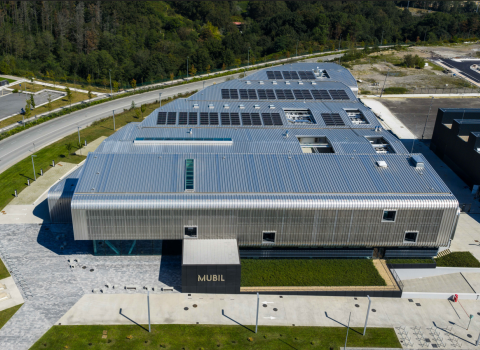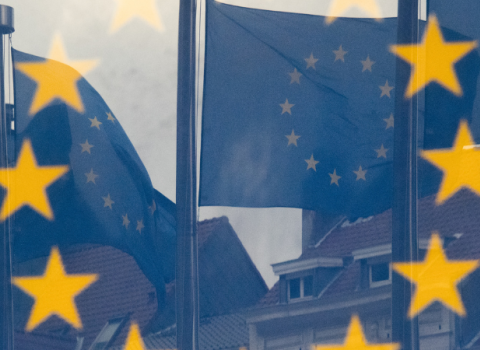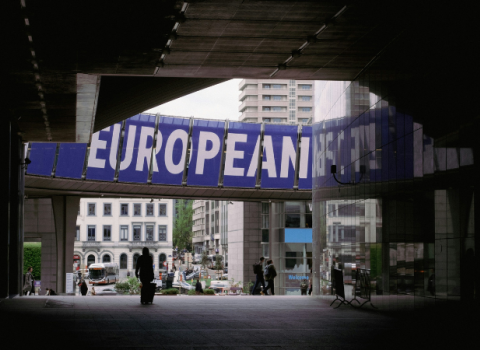Acknowledging forest dynamics would make carbon sequestration targets more realistic and help in their implementation

Photo credits: Juliette Portala
Forests play an important part in EU climate policy, acting as carbon sinks to mitigate ongoing greenhouse gas emissions. But the scientists who study forests think this policy ignores the complexities that their research reveals.
“At first look, using forests to absorb more carbon dioxide seems simple,” said Nicola Bozzolan, researcher in climate-smart forestry and bioeconomy at the European Forest Institute, speaking to Science|Business in a personal capacity. “If we reduce the wood we harvest, forests can grow undisturbed and remove more carbon from the air. [. . .] But the picture is more complex.”
Carbon sequestration in forests depends on a wide range of factors, including their health, age and growth and altered management practices. And yet, EU policymakers assume that the ability of forests to take in carbon is stable.
“We know that forest ecosystems are subject to anthropogenic pressures and natural disturbances. And these external perturbations can then lead these ecosystems to experience abrupt declines or non-linear dynamics,” said Giovanni Forzieri, a climate scientist at the University of Florence. “So, the assumption of a stable carbon uptake is a strong assumption.”
“Climate change itself is already making forests less stable,” Bozzolan added, citing recent damage across Europe caused by wildfires, storms and bark beetle outbreaks. “These events can turn healthy forests that absorb carbon dioxide into damaged ones that release it instead.”
Ignoring forest dynamics also means that EU policymakers are missing out on tools that could help them meet their targets. For example, Forzieri’s research indicates that increasing the composition or structural diversity of forests could lower biomass loss from fires, windthrows and insect outbreaks by some 18%, and ultimately benefit the EU’s emission mitigation strategy.
Carbon complexities
At present, forests absorb up to 10% of the EU’s annual greenhouse gas emissions. The European Commission wants to see this increase, and counts on planting three billion new trees by 2030 to boost carbon capture and storage. To this end, its forest strategy contains financial incentives for forest owners and managers, and training for forest-based industry workers. Meanwhile, its land use, land-use change and forestry regulation focuses on afforestation, reforestation and increased resilience to climate risks.
To build these policies, the EU relies on its in-house science service, the Joint Research Centre, whose newly approved 2025-27 work programme includes the creation of standards for carbon farming and the development of land-use modelling.
Related articles
- Leaked Horizon plans set priorities for biodiversity, food and environment calls
- Viewpoint: the Amazon needs to become a science and innovation hub
It is not just researchers who find this approach to carbon sequestration too limited.
“When designing the policy, the need for carbon stock renewal in the forests [. . .] has not been much considered,” said Hardo Becker, chair of the European State Forest Association’s carbon accounting working group. “The focus has been on the carbon in standing biomass, but not on active carbon sequestration nor the carbon that can be transformed into long lasting wood products.”
Johan Elvnert, secretary general of the Forest-based Sector Technology Platform, agreed that policies have neglected the “substitution effect,” the ability of wood products to substitute for energy-intensive materials such as steel and concrete.
For Becker, policies must be reshaped around the need to renew carbon stock through active forest management, greater use of biogenic carbon, and more innovation and sustainable investments in the woodworking sector.
Bozzolan also called for increased investment in research and the collection and sharing of forest-related data. Horizon Europe work programmes for 2025, however, barely address the safeguarding and restoration of EU forests.
Contacted for comment, the JRC declined to address questions on its advice about forests and climate mitigation but defended its general approach. “The JRC regularly interrogates its priorities, with reference to its own foresight and horizon scanning expertise, and in partnership with other Commission services to ensure alignment with policy needs,” a spokesperson said.





 A unique international forum for public research organisations and companies to connect their external engagement with strategic interests around their R&D system.
A unique international forum for public research organisations and companies to connect their external engagement with strategic interests around their R&D system.